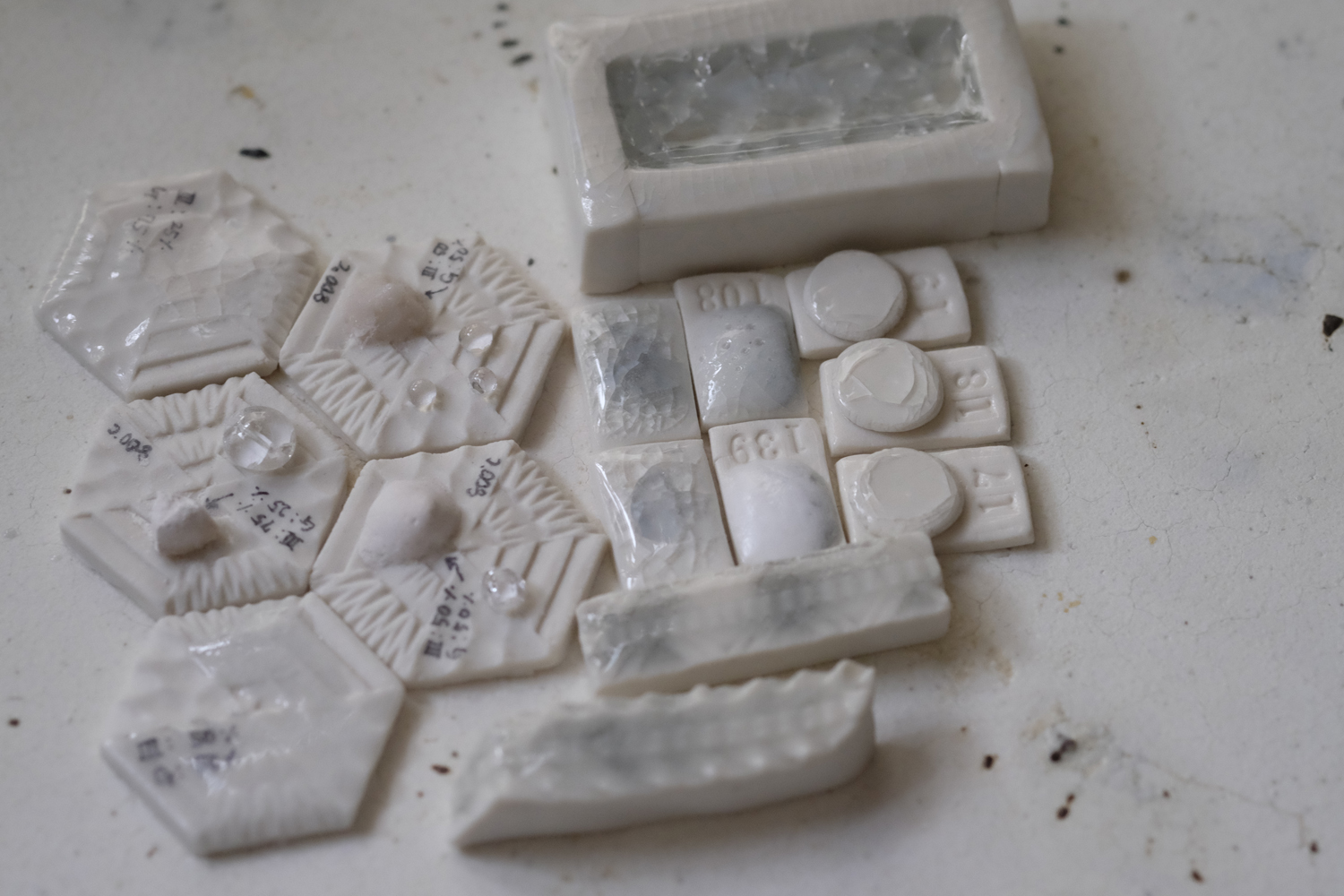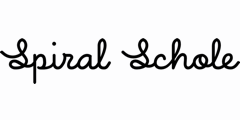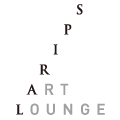Welcome to our ‘spiral market selection’ interview series, where we look at living from the viewpoint of artists and creators engaged in craftsmanship for daily life. In our eighteenth interview, we spoke with UU, who told us about her approach for making finely-carved ceramic jewelry under the concept of “crystallization“.

──An accumulation of carving experience
The main outlet for my expression is the carving of patterns on the surface of ceramics. I make rings and earrings and then carve on them with cutters and carving knives. If I shape the pieces after carving, the designs warp or crack when dried. Conversely, if they’re not partly dried when I start carving, they can be too soft, and lines I intend to be straight end up curved. So, I have to be careful with the timing for getting out my carving knives. It’s especially difficult to carve on curved surfaces.
I make it sound like extremely delicate and detailed work, but I don’t spend any more than one hour on a ring, and some I can even finish in 30 minutes. But when I work on carving, I make sure that’s the only thing I do that day. Otherwise I can’t concentrate. Once I’ve made five or six pieces in a day, I am so exhausted I simply can’t do anything else.
When working on new carving designs I start by sketching on paper, trying to imagine how it will appear on the ceramic surface. But there are so many unknowns before you start actually carving. I tweak my designs, taking into account overall balance, so it’s kind of like carving on-the-fly. I let my mood determine the size of the motifs. I feel that my decisions about shapes and what-not are less refined than you might think.

──Crystallization of the process
I use the word “crystallization” in my brand concept. Since I was a child, I’ve always loved things that take shape over time, like rocks and minerals. They occur as natural phenomena, but I believe we’re capable of such things through our actions too. It’s all about the time and effort we put into it. In my case, repetition of the very simple task of carving leads to crystallization — my image is of crystallization, even if it’s man-made.
Recently, I’ve been trying to limit the number of different pieces I produce, narrowing it down to a blue, white, and grey colour palette, and more minimalist shapes. The biggest influence has been the birth of my child. When I got pregnant, I thought I wouldn’t be able to keep doing the things I’d done up to that point. I had this idea that I should probably restrict my work. As I created pieces during my pregnancy, thoughts like “what do I want to do the most?“ and “I should limit my colors?“ wandered into my head. I went through this natural process of narrowing down my work, thinking – “if I’m not going to be able to do everything I want to, I have to at least do the things I really want to do”. The result was a renewed focus with “crystallization” as my key word.
Now that my child has been born, I feel that this approach has really worked. Because I determined the framework for my creations, I don't have to think about anything else. The fact that I can do exhibits like this even though I also need to parent a child and get household chores done, is probably the best sign that I made things easier for myself with this way of thinking. I also decided that I’d only work during the hours my son is at day care. It works with my lifestyle and I’m so pleased with how everything fits in. I’m more efficient too. Previously, I made lots of different kinds of pieces, but reducing the variations has led to increased substance. And whereas I used to want as many people as possible to see my works, now I’m happy if they're just seen by people who are genuinely interested in them. It all seems much clearer now. I’ve always been skilled with my hands, so looking back now, I realize I was making all kinds of things just because I could.

──Condensing the aqueous solution within myself
I love things from different cultures, like textiles from different ethnic groups around the world, patterns on stone walls from Mayan civilizations, and rope patterns on pottery from the Jomon period in Japan. I’m also fascinated by Ainu culture. I like to study the things I’m interested in and let them swirl around inside me, filtered by the passing of time until they emerge as new motifs in my work. I think that also feeds into my brand concept of crystallization. Just like strong saltwater turns into crystals with the passage of time, I want to make the aqueous solution within myself as condensed as possible. With a small child, it’s hard for me to get out and travel, so these days I often collect information by looking through illustrated books and watching film footage.
I love the feel of something when it’s emerged from a build-up over time, or an accumulation of actions. I have a collection of photos of buildings from long ago that I’ve found. I see jobs that I’d love to be able to do. Even with a single rock, I imagine the thousands of years that have passed since it flowed as lava from an erupting volcano to form a mountain, the pieces of which broke off into small rocks, one of which I just picked up by the seaside.
When I make a lot of pieces at once, I enjoy quietly imagining the total number of my pieces on earth. Tens or even hundreds of years from now, if my works emerged here and there through archaeological excavation, and you lined them up, how much space would it take up? Pottery and porcelain wares degrade much less over time than metals, so if my pieces were excavated at some point in the distant future, the metal parts would probably be rotting but the ceramic parts would still be fine. These are the kinds of things I think about.
Interview and editing by Spiral

Ceramics are so similar in composition to minerals and gems
Particles formed over extensive periods of time
Construction based on the orderly interconnection of tiny objects
Time and consciousness condensed and crystallized
Unique crystals created in our hands
http://uu-unununium.blogspot.com
Instagram ID: uu.ceramic.jewelry

※ delivery in Japan only, website in Japanese
Spiral Online Store UU's special page

Venue:Spiral Market
* The event has ended.





